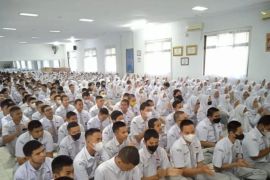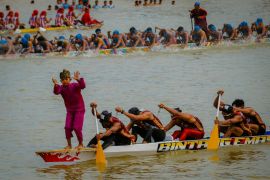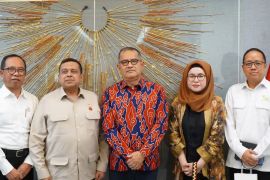Called Human Detection System (HDS), the search tool, created by Muhammad Arkaan Izhraqi, Nyoman Abiwinanda, and Adinda Sekarwangi, is a combination of Machine Learning Technology and Unmanned Aerial Vehicle (UAV).
"We created this tool to assist in the search for victims of sea accidents that frequently occur in Indonesia," Izhraqi remarked here on Tuesday.
He noted that several ship accidents in oceans led to several victims going missing, as was the case of five fishermen, who were no longer traceable, in the Supiori waters last January.
"Drawing inspiration by the National SAR Agency that uses drones as a UAV system in the search for casualties at sea, but without a detection system that takes a long time to conduct a search, we tried to create this tool we called the Human Detection System," Izhraqi remarked.
According to Izhraqi, the HDS is different and superior than the general UAV, as it can work automatically without having to be monitored continuously by an operator from a ground station.
If the search area is large enough and operators are unable to monitor the search round-the-clock, HDS becomes an effective solution to solving this problem, he pointed out.
He explained that this tool was created by integrating the Uex autopilot system in the form of a hexa copter with an object detection software, so the search process can be automated and be conducted in parallel.
Izhraqi describes this tool using an autopilot-controlled hexa copter, and the first one will fly in accordance with the waypoint set by the operator in the ground station as a form of initial initiation.
"The video will be transmitted to the ground station and then processed by a human detection software. A notification will be shown in the form of a bonding box in the ground station interface," he explained.
"Hence, if a human being is detected, it will be followed by an alarm sound. The final output resulting from the interface is the position of the victim in the form of coordinates," he stated.
The victim detection process in HDS uses a special algorithm. The Detection Algorithm called You Only Look Once is planted on the ground station computer and further optimized by boosting the tracker speed to 18 frames per second. Objects that can be detected using this algorithm are humans and ships.
"So far, the new HDS is able to detect objects near the surface of the ocean only, so we need to improve the capturing of images, with the use of infrared cameras," Izhraqi remarked.
Hence, Izhraqi expressed hope that his work would be applied in future, thereby helping to evacuate casualties at sea more quickly.
Reporter: Otniel
Editor: Otniel Tamindael
Copyright © ANTARA 2018










